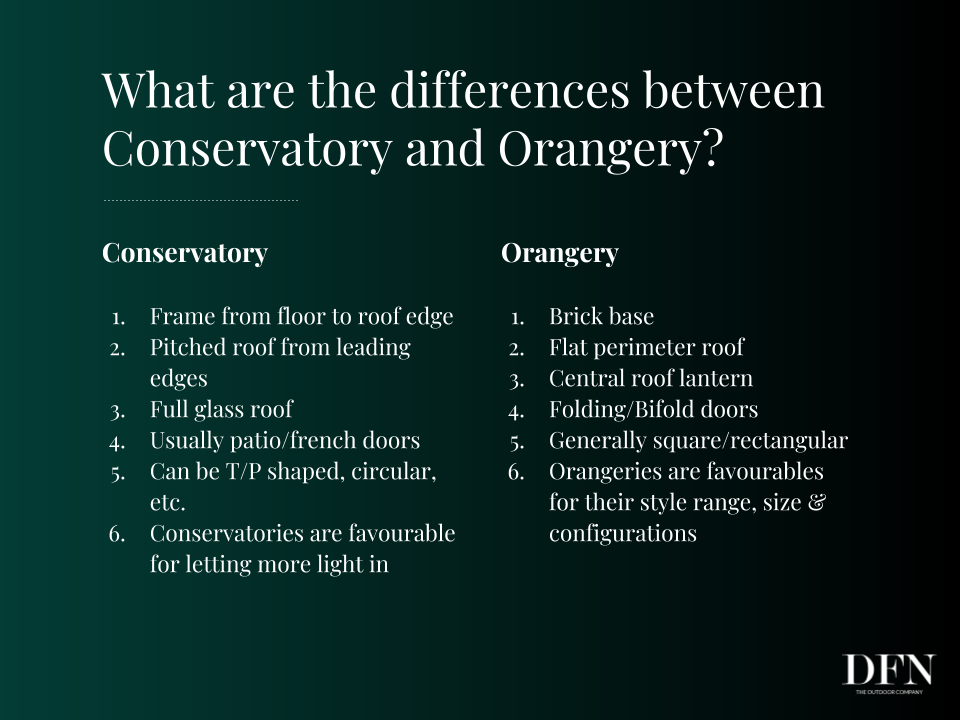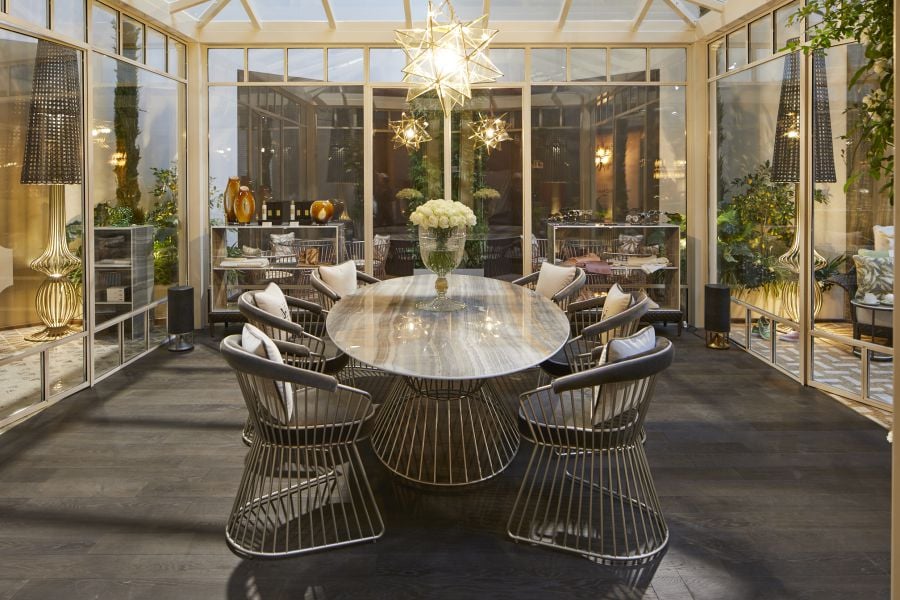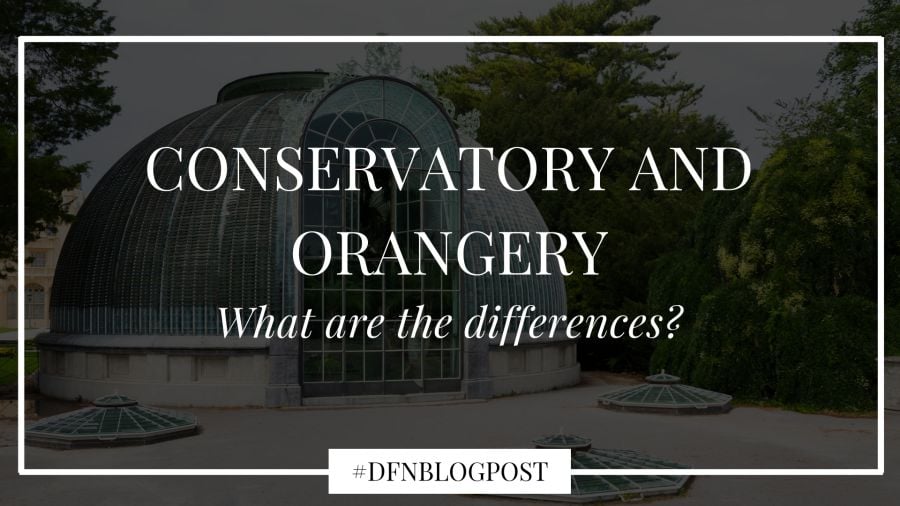A winter garden is the latest green trend in architecture. These structures not only create continuity between indoor and outdoor space due to the presence of large spaces with glass walls, but also allow the environment to be air conditioned and therefore to better enjoy the green spaces in the comfort of a protected place.
In addition, during the summer, the garden can be considered to all purposes an extension of the home. While in winter, due to the lower temperatures, it is very difficult to fully enjoy an outdoor space.
For accommodation facilities, it could be a limit to have a climate that is too harsh - or too hot, depending on their geographical location.
Surely, by offering clients the opportunity to experience a Conservatory or an Orangery, the hospitality structures will acquire added value and become the preferred venues of guests.
In fact, a winter garden is able to give life to timeless atmospheres and represents a luxurious and bright space that allows people to immerse themselves in nature even when outside the weather does not allow it.
A winter garden is an emotional and elegant environment, enjoyable all year round and absolutely multifunctional.
Therefore, it is important to choose carefully the ideal winter garden for the hotel industry or for an exclusive home for which it will be intended, so as to obtain a space of luxurious, refined and welcoming design.
Before designing an iron and glass structure, it is important to know the characteristics of the Conservatory and Orangery and what makes them different.
The first luxury winter garden
Born in the seventeenth century in the Renaissance gardens of Italy, Orangeries were fashionable among the rich elite of the time, representing the status symbol par excellence of luxury and wealth of many wealthy families.
Because of their beauty and comfort, they became a trend all over the world.
Orangeries take their name from their original function: this type of extension of the house, in fact, was mainly used to grow and give winter shelter to citrus trees that required a lot of light and heat to grow. Thanks to these structures, the development of plants and the production of their fruits were facilitated, even in countries with colder winter climates.
They were defined as chic and extravagant greenhouses.
Orangeries, with their glass structure, offered bright and spacious spaces that could be enjoyed all year round, without leaving the house.
Often, because of their elegance and the luxurious plants grown there, they represented a space that owners loved to show their guests.
When with the beginning of international shipments of goods and transport, it became easier for everyone to find the availability of this type of fruit and to buy it, the Orangery became the luxury home for many other exotic plants and vegetables, and then over time became a luxury extension of the home for general purposes.
From their humble origins in Italy, to the important architectural developments of today, an Orangery will make the structure perfect and sophisticated, creating a sort of dialogue between the host structure and the outside world thanks to its construction with large glass walls, which will give a feeling of greater space to the whole room.
Of course, the need for more space and light is still present today.
That is why the Orangeries did not disappear but developed to the present day, changing their original function but not their exclusive character.
On the contrary of the traditional home extensions with rigid and blind roof, which appear rather dark and inhospitable, an Orangery floods the room with natural light.

The magic of the glass house
A Conservatory is also an extension of the house where in the past, instead of the cultivation of citrus trees as was the case in the Orangery, the cultivation of plants in general took place, because the structure, consisting of a glass ceiling, was ideal for obtaining the perfect amount of light to grow plants and lush flowers.
Conservatories are charming structures with light, airy and very elegant appeal made of iron and glass, which characterized countless public and private gardens between the nineteenth and twentieth centuries, following the refinement of steel processing techniques due to the industrial revolution.
In the same period, the veranda, which until then was used as a shelter and dryer for umbrellas, was brought back to new splendour. Garden furniture and a whole series of accessories, daily used during holidays, made their appearance here: tables and chairs in wood, living rooms in rattan and wicker, chaise-longue reinforced with canvas or in aluminium with linings and cushions with the freshest and most refined patterns. There was a propensity to live most of the time available in this new environment that allowed people to feel the vital force of the season in a more intense way.
Therefore, Conservatories were built, as is still the case today, next to the house, on the ground floor or on a sufficiently large balcony. Their luxurious Victorian appearance can be made of iron or wood.
The shape of the veranda can range from the rigorous rectangular shape, rich in corners and edges, to the softened shape of the curved glasses, made possible by modern construction methods that offer round frames of great effect.
The similarities and differences between Conservatory and Orangery
Do the two winter gardens have anything in common? Of course!
In fact, they both:
- use double or triple glazing glass for each window: in order to maximize energy efficiency.
- They guarantee a quietly liveable space during the cold and dark winter months thanks to the accessories with which they can be equipped (electrical, heating and cooling systems).
However, they are also various differences.

The roof
Conservatories generally have a pitched roof adjacent to the property wall and have a frame structure from the ground to the edge of the roof without a perimeter.
On the contrary, the Orangeries often have a brick base and a flat perimeter roof with a central skylight of glass panels or ventilation windows.
Even though the height of the ceiling is often not much higher than that of the door, the skylight adds visual height and a feeling of space to the environment.
The construction
The composition of the Conservatory starts from the base up to the beginning of the pitched roof.
The structure of the Orangery, instead, is usually composed of shorter brick or wooden pillars that support the flat perimeter of the roof.
The Conservatories are often built with French doors, while the Orangeries are built with doors with sliding or folding opening systems.
Lighting
The shape of the roofs affects the choice of the winter garden.
In a Conservatory, natural lighting is more extensive compared to the Orangery one, as the ceiling glass panels are supported by a minimalist structure that allows larger panels.
However, the roofs of the Orangeries offer better artificial lighting, which at night means an additional advantage. The lighting system also makes the interior much more similar to any other room in the structure, making it ideal for an extension of the kitchen, a living room or an elegant dining room with a view over the garden.

The relationship with the surrounding environment
Conservatories are always an extension of a property which often reflects the design, style and general feeling that is conveyed.
They are a real integral part of a villa or a hospitality structure, the final touch, the icing on the cake. Therefore, the act as an additional space for practical or functional reasons.
An Orangery, otherwise, may be an extension of the hotel or restaurant, but may also arise in an isolated, detached manner.
In addition, its structure is often very different from the rest, with large windows to give it more prominence, obtaining a lively and classy result and a luxurious atmosphere.
However, in order to meet the changing needs, the today's iron and glass structures combine the characteristic elements of the conservatory with those of the orangery. That is how complex structures, that are designed to meet specific needs, are created.
Whatever the choice, each of them will become the main attraction of the structure, perfect for relaxing and feeling luxuriously immersed in the surrounding environment.
Reason why you should include a winter garden in your projects
Obviously today these extensions are no longer used as greenhouses for plants, although placing some of them inside would make the space really welcoming.
The uses of such a versatile room are many: from housing a swimming pool or a gym to a large dining room or kitchen, it can be used in your free time or as an office, such as an outdoor living room or billiard room. There is no limit to the value of the environment that a winter garden is able to give.
In conclusion
Now that you know the differences between Orangery and Conservatory you are ready to choose which is the best for your project.
So, create the perfect winter garden not only by taking into account the structure, but also the choice of interior design according to the use that your clients will make of it, the materials, colours, feelings you want to arouse ...
Remember to add a little bit of green. Plants and flowers create a richer and more charming atmosphere, and surround the scene with colours and scents in line with the tradition that accompanies the history of these structures.
A winter garden will be the strength of the project you are working on, so make sure you have created a good "business card", something that will pleasantly surprise your clients.
In this way you will get a harmonious and pleasant space to admire and live in.





